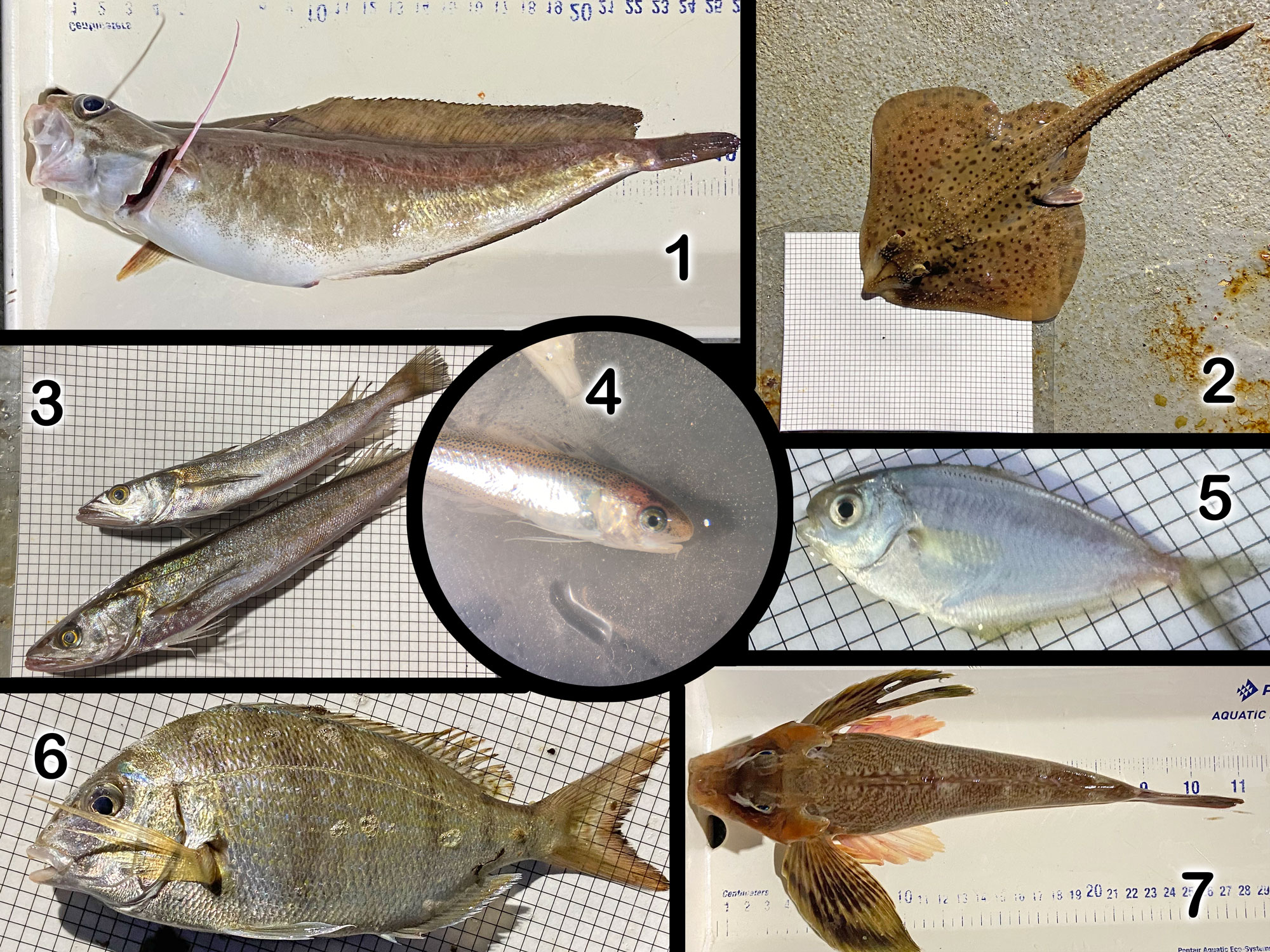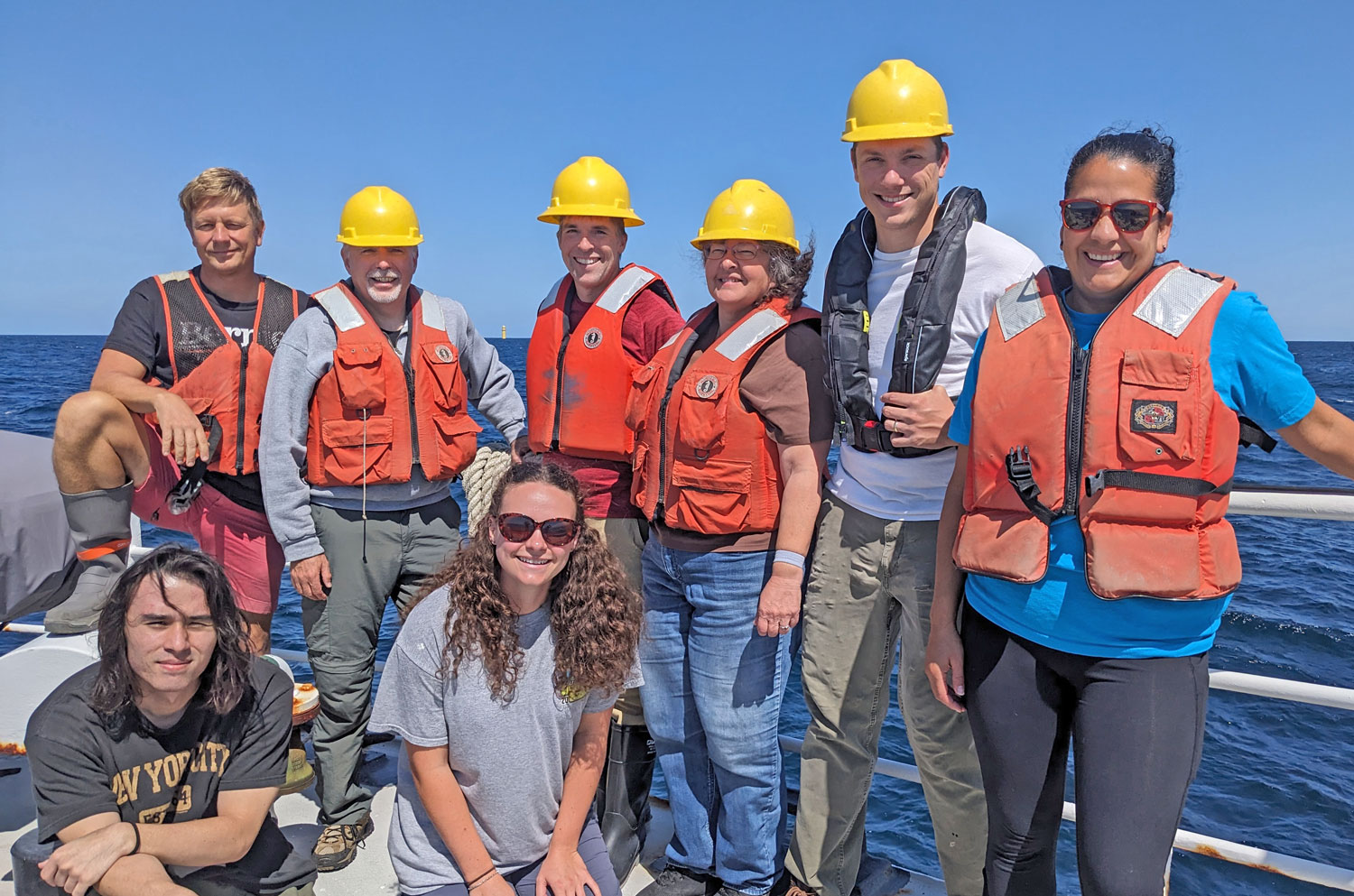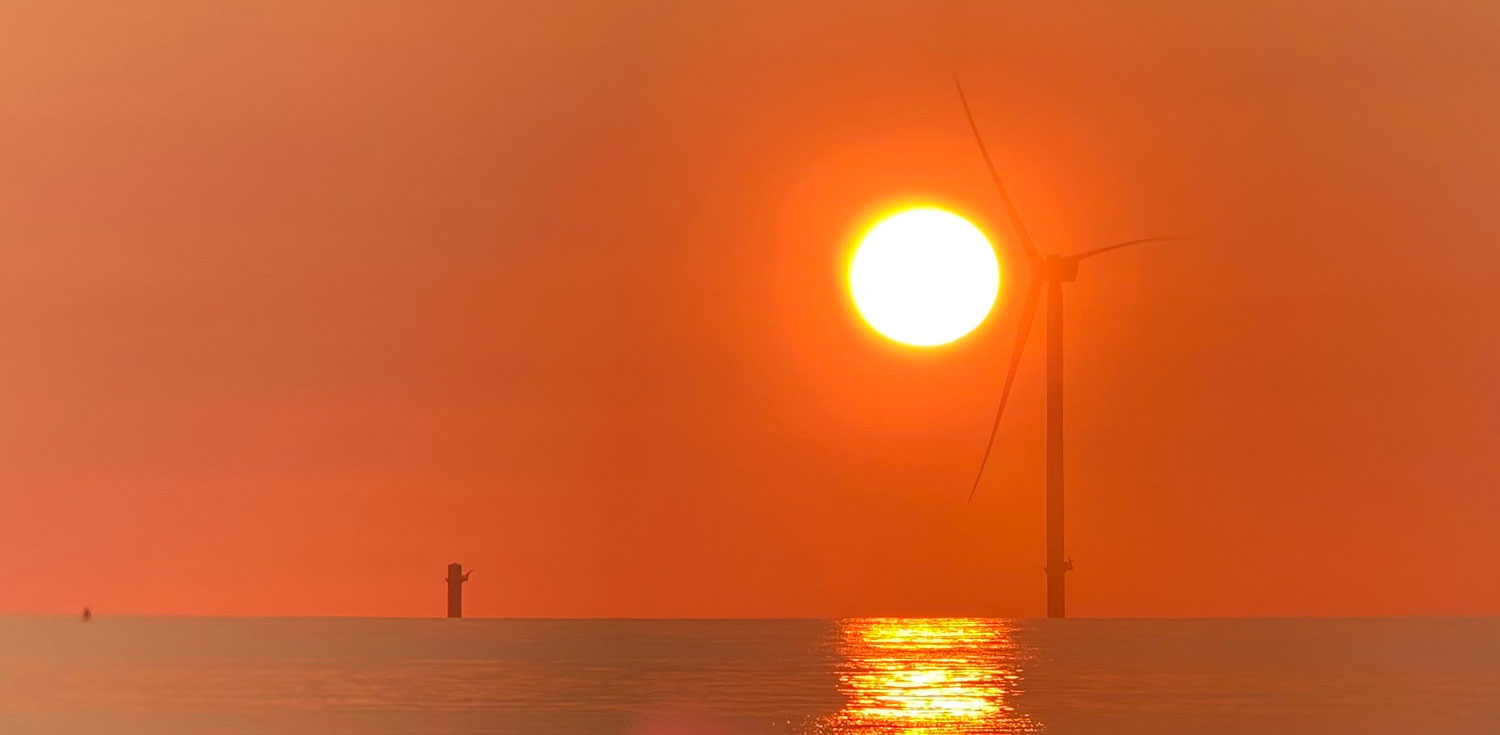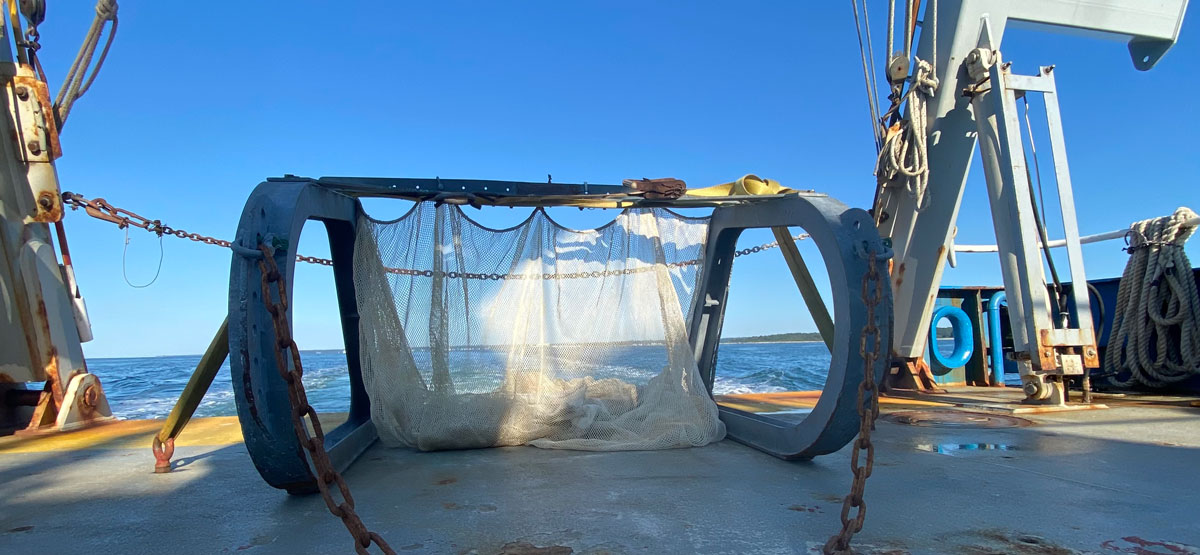6 September 2024. During the first research cruise of the CIEROW group on board the R/V Connecticut, our lab deployed a box trawl in- and outside the Revolution Wind field for a total of 7 times and 5 different locations. The box trawl had a 6 mm cod-end and tickler chains to catch small benthic fish – specifically sand lance of the genus Ammodytes.
The box trawl was deployed from the main deck winch of the R/V Connecticut, with approximately 200m of wire let out in stations with water depths ranging from 34 – 38m, trawl speeds of 2 – 2.5kn for 13-15 upon reaching full wire-out lengths. Total trawl time (trawl in water – out of water) was about 25 minutes. During light hours, the trawl was equipped with a GoPro (Hero 4) to obtain footage of the trawled seafloor and potential organisms.
Overall, the trawl worked well with the ship and deployed as intended over the bottom. The GoPro footage revealed mostly sandy/muddy substrates with surprisingly little benthic fish life. Sand lance were neither caught in the trawl nor seen on the videos. Most trawls caught only few organisms, with the exception of Trawl 3 at station R6, which collected a number of common benthic fishes such as two hake species, one skate, sea robin and scup.

For this first deployment, we were cautious operating the gear in safe areas, but probably ended up trawling over sandy/muddy sediments that are not good habitat for sand lance. For the next cruise, we will therefore aim to alter trawl locations to include stations with known gravel or coarser sediment types.
A special thanks to Joel Llopiz and Lyndsey Lefebvre from Woods Hole Oceanographic Institution, who kindly lent us the box trawl to fish for sand lance, and to Justin Suca for facilitating this. We are also grateful to Marco, Sam, John and Luke from the R/V Connecticut crew for helping to deploy this new gear, even in somewhat rougher seas.

Welcome Home!
The first CIEROW cruise in the local UConn news:
UConn Today: UConn Researchers Set Sail for Wind Study
Daily Campus: UConn Avery Point researchers begin study on offshore wind farms and ocean habitats


